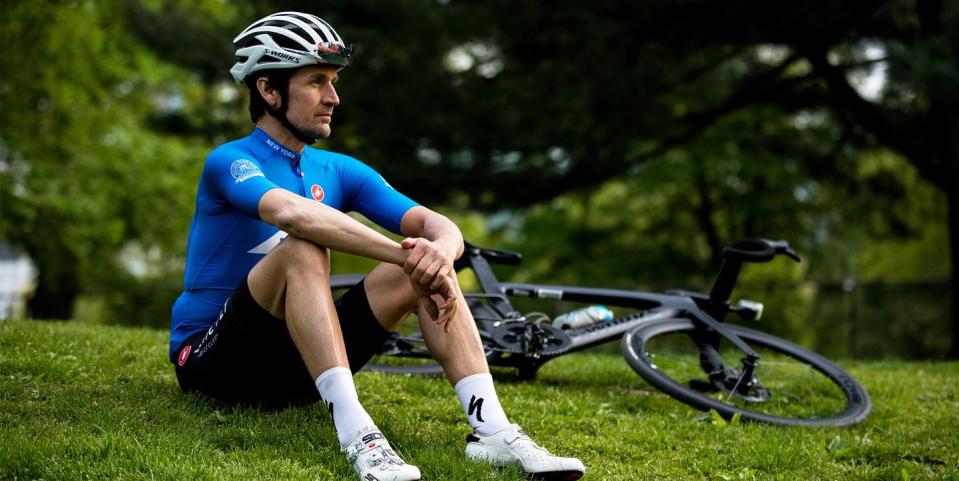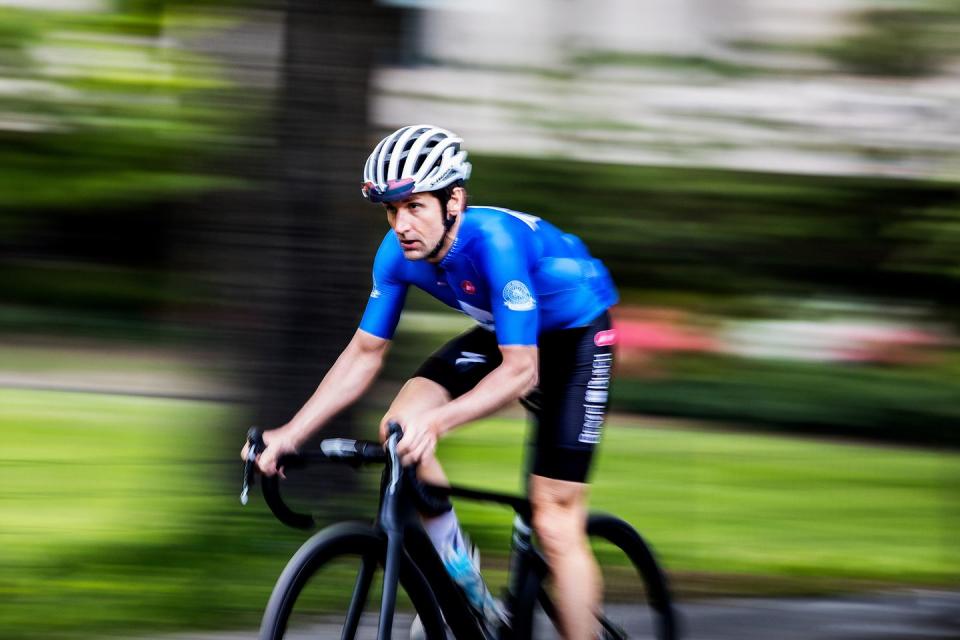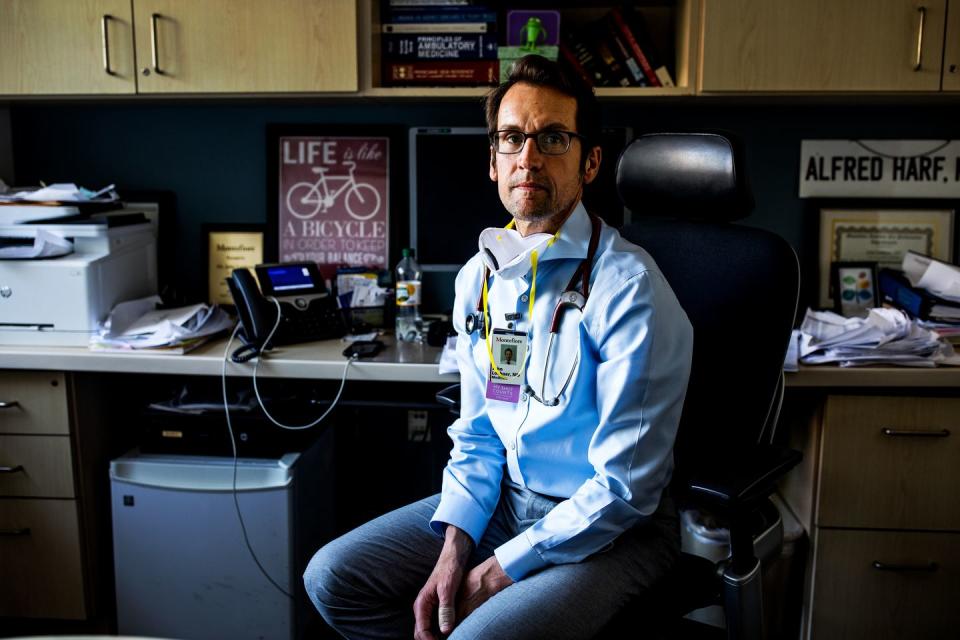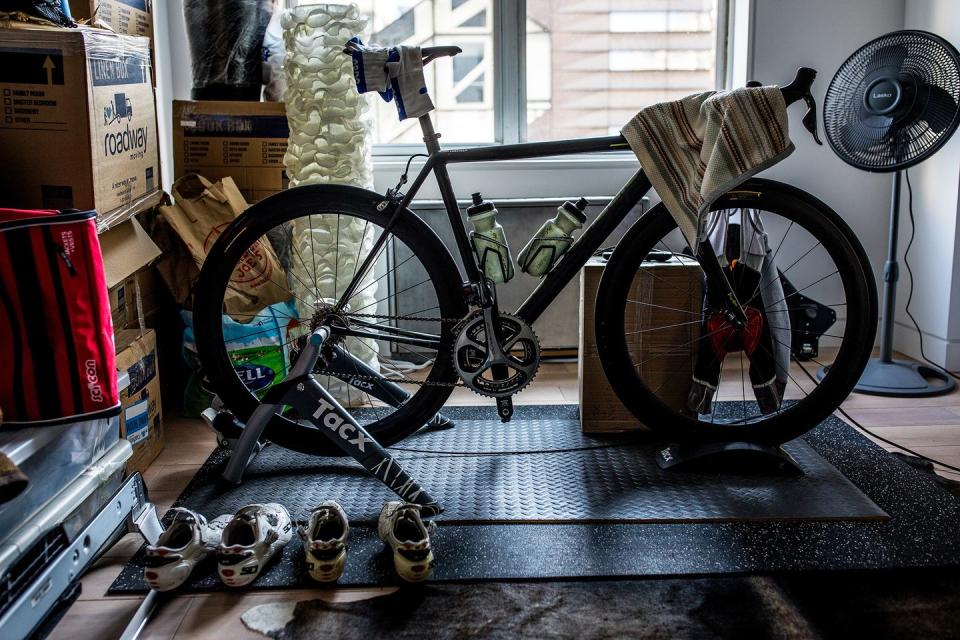I'm a Frontline COVID Doctor, and My Daily Rides Keep Me Sane

John Loehner, M.D., is an internal medicine physician and medical director at the Montefiore Medical Center Moses Campus in the Bronx. His hospital has admitted more than 7,000 COVID-19 patients. Before medical school, Dr. Loehner raced professionally, including two years for Saturn in 1992 and 1993. He lives in Manhattan, rides (nearly) every day, and in normal times, races local Cat 1 events.
A job like mine requires a remarkable amount of stamina and presence. You have to absorb so much stress and emotion while still planning and preparing. The experience I’ve had over the decades cycling—those cognitive exercises and the demands of racing—are directly applicable to my professional life now. With COVID-19, you’re facing new problems that need to be solved every day, ones that were next to impossible to forecast even a day earlier. But cycling has been key in helping me weather this storm.
I ride early in the morning, around 5:30, or late at night, wrapping up by 10:30. The goal is just to pedal a little bit each day. But how and when I do it can vary significantly. I spend nine to 12 hours at the hospital, but work is with me 24-7 on my phone and email.

I’m a medical director at a largely academic facility, a teaching hospital. Even before this, my days were varied, depending on individual problems and greater strategic issues, like improving quality metrics. Then I have teaching and my own patients. My job is also to take care of the staff, manage their stress, make sure we have enough protective equipment, and update our policies to reflect our needs. One of the biggest challenges early on with this disease—something nobody’s dealt with—was readjusting our plans as demand was increasing in [exponential] fashion.
We knew coronavirus was coming and we prepared the best we could. But I don’t think anyone knew we would be the hottest of hot spots on the globe. We’d been watching and planning for the coronavirus since January, and in the first week of March we pulled the trigger on an extensive surge plan. We doubled our critical care beds and increased our regular beds by 50 percent, converting auditoriums and conference rooms—any non-care areas we could. We almost doubled our inpatient beds. And we filled them. At our peak, my hospital had just under 700 positive patients admitted and almost 120 in an ICU setting, with almost 160 patients connected to mechanical ventilation.
This type of work can be overwhelming. At the peak we had up to 15 deaths a day, most of which were announced overhead in rapid responses, or what we call a CAC—that’s the sign for cardiac arrest to mobilize an emergency team to perform advanced life support. There was an enormous amount of fatigue and fear and dedication. I would be with the nursing unit at change of shift, when staff would come around before starting and hold hands and pray. And as they were getting ready to answer the call of duty, half the staff had tears running down their cheeks. That’s how challenging this was. Every day.

New problems emerged every day that were virtually impossible to anticipate, but you had to solve it that day. Like monitoring oxygen saturation for patients with severe pneumonia. Many doors didn’t have windows, and people had to go in and out to do the monitoring, burning through a tremendous volume of PPE and time—that’s 15 minutes each time to don it and remove it because you have to be careful. So nurses started using tubing extensions and putting machines and pumps outside patient rooms so they could monitor easily and respond quickly.
In the hospital you see the worst of the worst, and in this pandemic the worst was really bad. I’ve never seen so much death on a daily basis.
We had days when we had so many staff out sick that we were unsure how to staff certain areas. We had weeks when we were biting our nails waiting for trucks to arrive, hours away from running out of vital equipment like gowns, tubing, and masks. You feel helpless. You’re doing everything you can, but you’re still waiting on that bloody delivery truck—you wonder, are people going to die from that?
One day we had a delay in PPE, and a lot of staff and clinical leaders were breaking down my door asking where it was, saying, things are happening and we can’t safely take care of patients. We were still opening our alternate care areas and a few of my patients were severely ill—COVID-related pneumonia, difficulty breathing. We weren’t sure which way they would turn. I went in at 7 a.m. and didn’t leave until 11 at night. That was a rough day. I was up the next day at 5:30 for an hour on the trainer to sweat it all out.

Throughout my medical career, the bike has always been a primary source of stress relief. When we started getting our first COVID cases, when things really began to ramp up, that’s when my riding focus took a significant turn from training for local events and fitness to just getting out for a mental release and maintaining balance.
On days when I feel more refreshed and the legs feel better, I still enjoy turning the screws and feeling the burn. On days when I’m more tired, I know I’ll be much much happier if I pedal. I don’t stress that the legs feel tired. And I’m not following any structured program. I just ride at whatever pace is comfortable, anywhere from 50 minutes to two and half hours.
JOIN BICYCLING NOW FOR $40/YEAR
In the mornings, I’ll ride from my home in Greenwich Village up the Hudson River, maybe turn around at the top of Manhattan, and head to Central Park for laps. If it’s after dark, I’ll just do laps in the park. It’s an incredible oasis, especially during the quarantine, and it’s been gloriously empty. It’s well lit and closed to traffic, and you have a three-lane, 10K loop at your disposal. In spring I had the magnolias and cherry trees flowering. It’s incredible. I find the ride to be an absolute necessity.

The early part of every ride is very relaxing from a mental perspective. It gives me emotional and cognitive space. As the legs open up and the lungs open, I’m able to regain a little fresh air. Then the gears step up, and the speed increases. And then I start to enjoy the idea of going harder and hitting that zen of hearing the wheels and feeling my breath.
It becomes meditative. There are days when I wear headphones, play my favorite music, and allow myself to get lost in that and do cruise control around the park. There are times when the older stuff, Stones and Zeppelin, gets the blood pumping and my mind off things. And if I’m just totally spent, I play Kings of Leon, London Grammar, or even house music. That helps me escape.
People will be like “whoa, whoa, whoa, you’re exhausted, what do you mean you’re going out for a ride at 8 at night?” What a non-cyclist, or anyone who doesn’t have a lifelong passion, doesn’t understand is, it doesn’t matter how tired I am, it’s still relaxing. When you’ve done it so long, and when you ride for the love of it, it becomes restorative—not remotely fatiguing.
I’ve never regretted going out for a ride. I’ve only regretted not riding when I had the chance.
You Might Also Like

